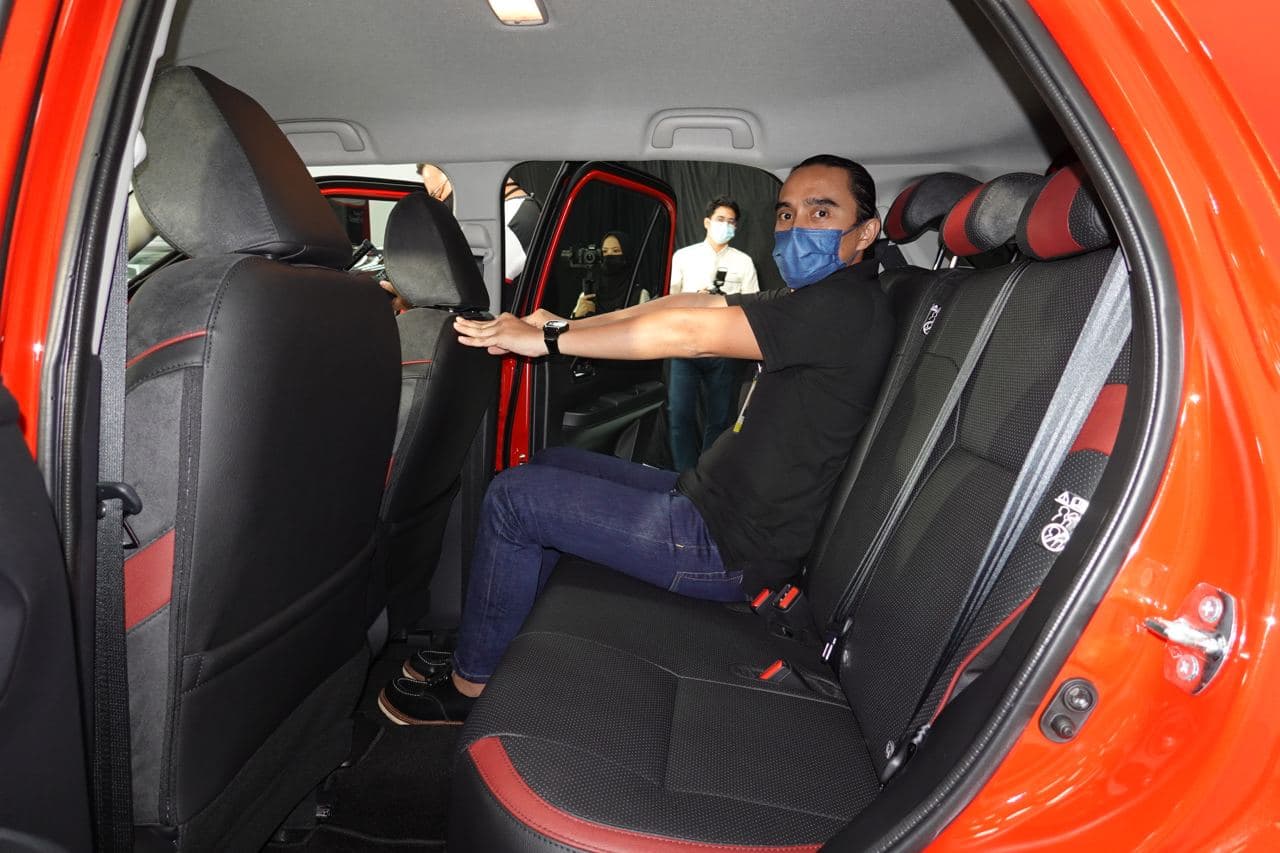BEHIND THE WHEEL
Here’s The Perodua Ativa In All Its Glory
Advanced apologies to the Proton X50 but the hype train has departed Tanjung Malim and made a direct run for Sungai Choh because the most talked-about new car of the year enters the fray. Here’s the Perodua Ativa.
Here’s a recap of the Ativa because it isn’t like every other website hasn’t already done it.

There’ll be three variants. An entry-level X, a mid-range H and the flagship AV. Pleasantly, the Advanced Safety Assist (ASA) 3.0 is standard across the range.
ASA 3.0 is a progression of the safety suite found in the Myvi and Axia but with the addition of Lane Departure Warning to accompany the pre-existing features that are:
- Front Collision Warning
- Pre-Collision Braking
- Pedal Mis-operation Control
- Front Departure Alert

Now before everyone asks what it stands for, the Ativa is Portuguese for “active.” Given that it’s a revival of the marque’s SUV range, the name seems apt as it invokes a sense of adventure and an active lifestyle. Why Portuguese; there’s only one obvious explanation and it harks back to our history books in secondary school.
The Ativa rides on the Daihatsu New Global Architecture (DNGA) platform and is the first Perodua to use it and probably won’t be the last.

While many Perodua models were rebadged, work on the Ativa started over three years ago and was co-developed by Perodua and Daihatsu. The basis of this was the placement of about 50 Perodua engineers in the Daihatsu Motor Company to develop certain modules for the base model that’ll form the Ativa as well its Daihatsu and Toyota derivatives.
A prime example of the shared development would be the rear door and its subsequent components. So yes, the Ativa’s rear door and its modules are all Perodua.

As of its launch, 95 per cent of the Ativa’s contents are locally sourced; making it the highest among all Perodua models.
Motivation is courtesy of the 1KR-VET 1.0-litre that’s a turbocharged three-cylinder petrol engine; the first forced-induced mill in Perodua’s history. Power weighs in at 97hp and 140Nm of torque with 120Nm available from just 2,000rpm.

The transmission of choice for the front wheels is a D-CVT (dual-mode CVT). This is a combination of your usual CVT but with a set of planetary gears for that can be disengaged via a clutch pack dependent on the driving scenario.
At low engine speeds, the transmission operates as a regular CVT but at higher engine speeds, the planetary gears set in via the clutch pack to lower the engine load and deliver a more direct transfer of torque. The gear set also serves to reduce that dreaded CVT whine as well as the frictional losses.

You’ll notice the “PWR” button on the steering that alludes to a Power Mode for some extra oomph. Being a Perodua, fuel consumption is of the utmost importance and one of the core characteristics that the Ativa will be judged on by keyboard warriors. The number you’re looking for here is 18.9km/l.
Now while ASA 3.0 is standard across the range, the AV trim obviously gets all the good stuff. This comprises:
- Adaptive Cruise Control
- Lane Keep Control
- Blind Spot Monitor
- Adaptive headlights

The rest of the standard safety range includes the usual array of six airbags, ABS, EBD, stability control, hill-hold assist and Isofix anchorage points.
Pricing is as below:
Perodua Ativa X – RM61,500
Perodua Ativa H (metallic) – RM66,100
Perodua Ativa H (special metallic) – RM66,600
Perodua Ativa AV (metallic) – RM71,200
Perodua Ativa AV (special metallic) – RM71,700
Perodua Ativa AV (two-tone) – RM72,000

















Must-Watch Video



